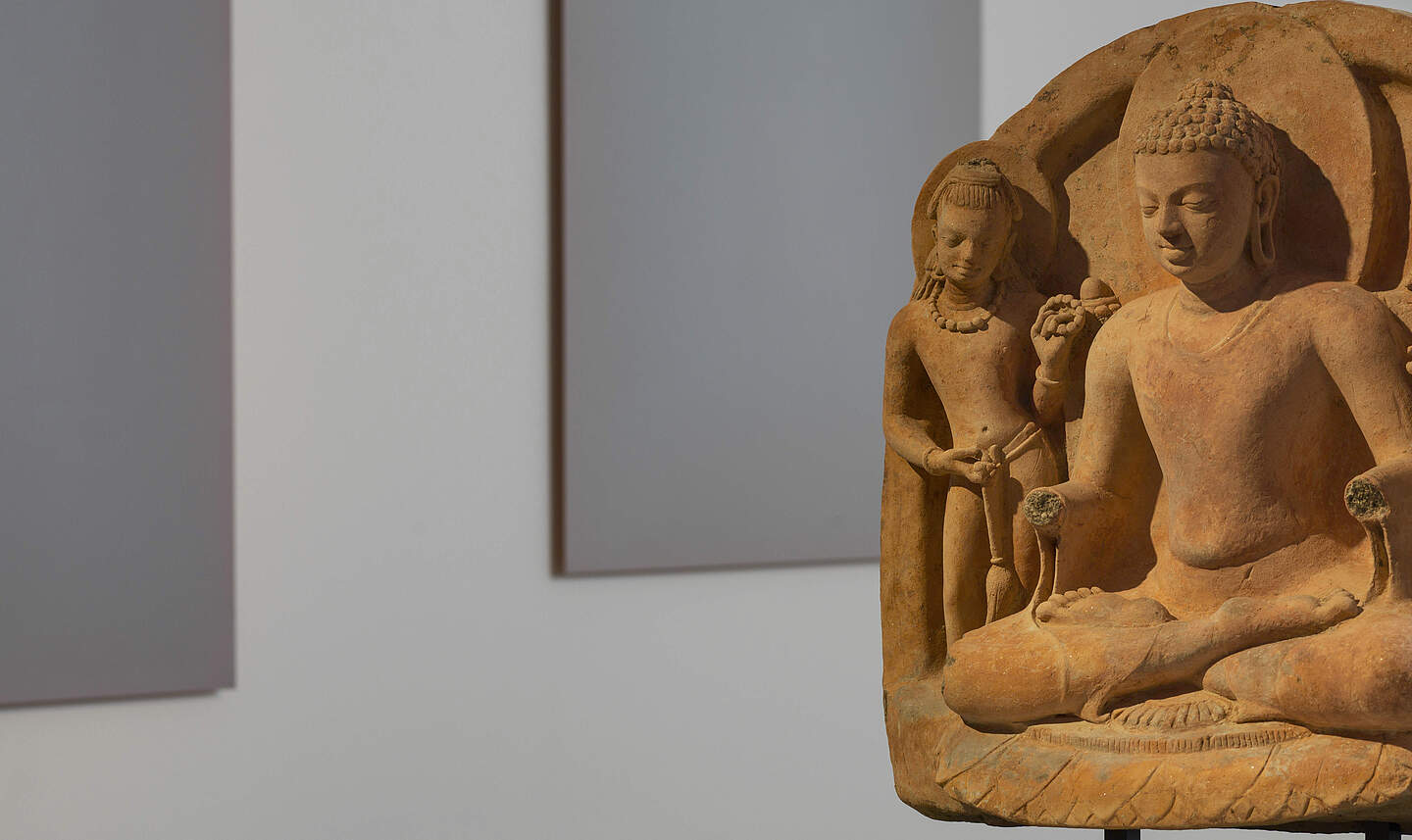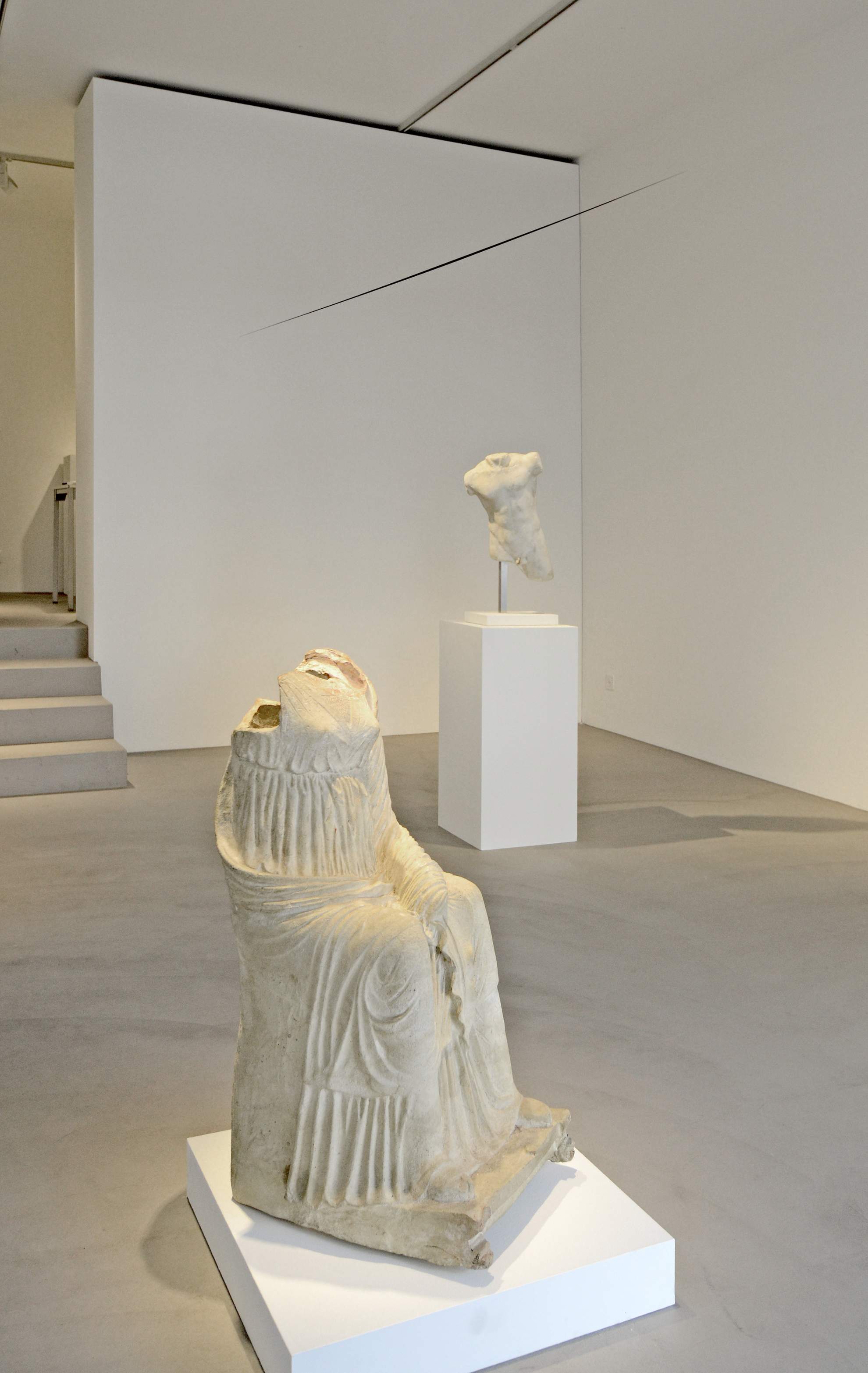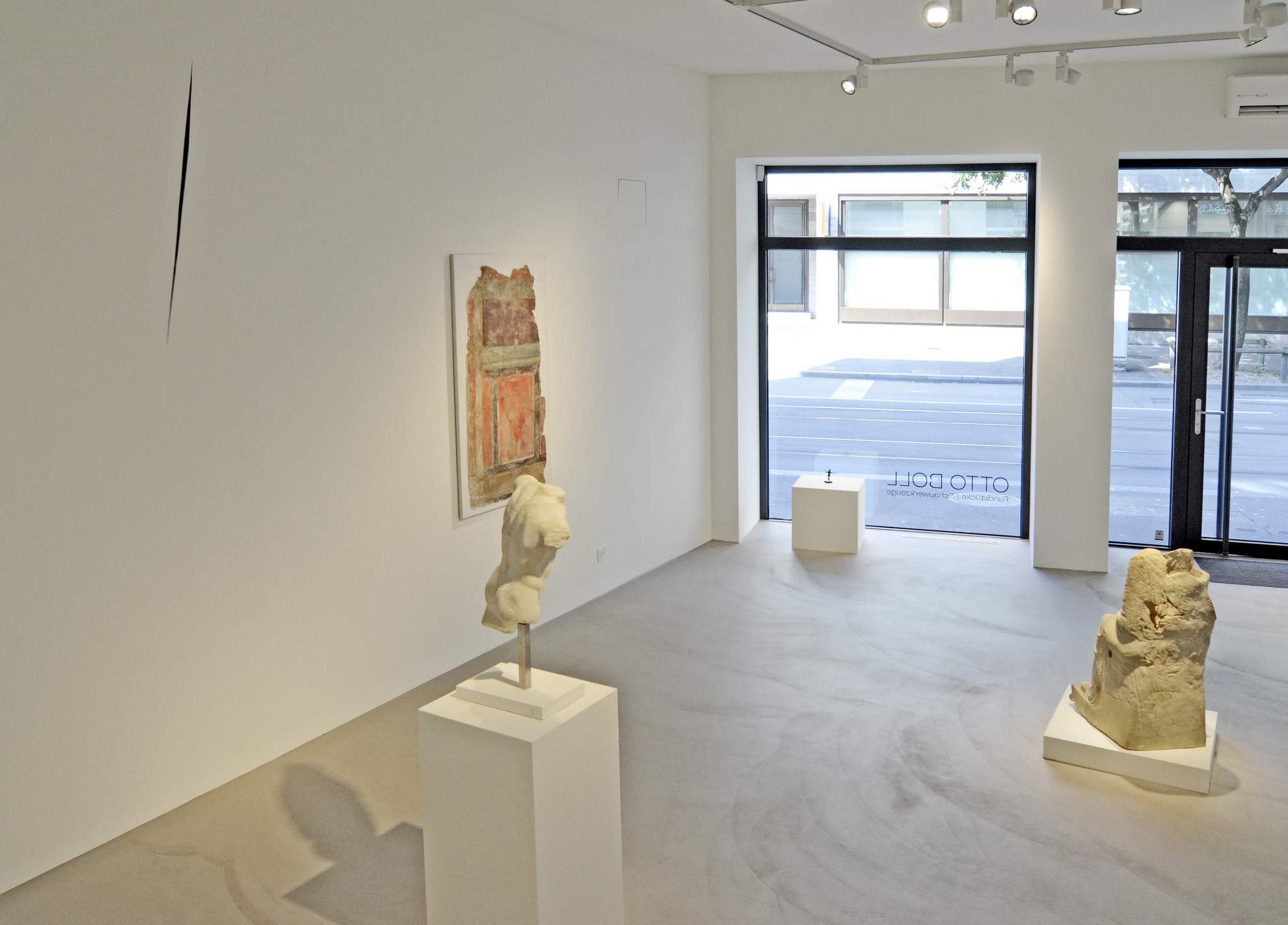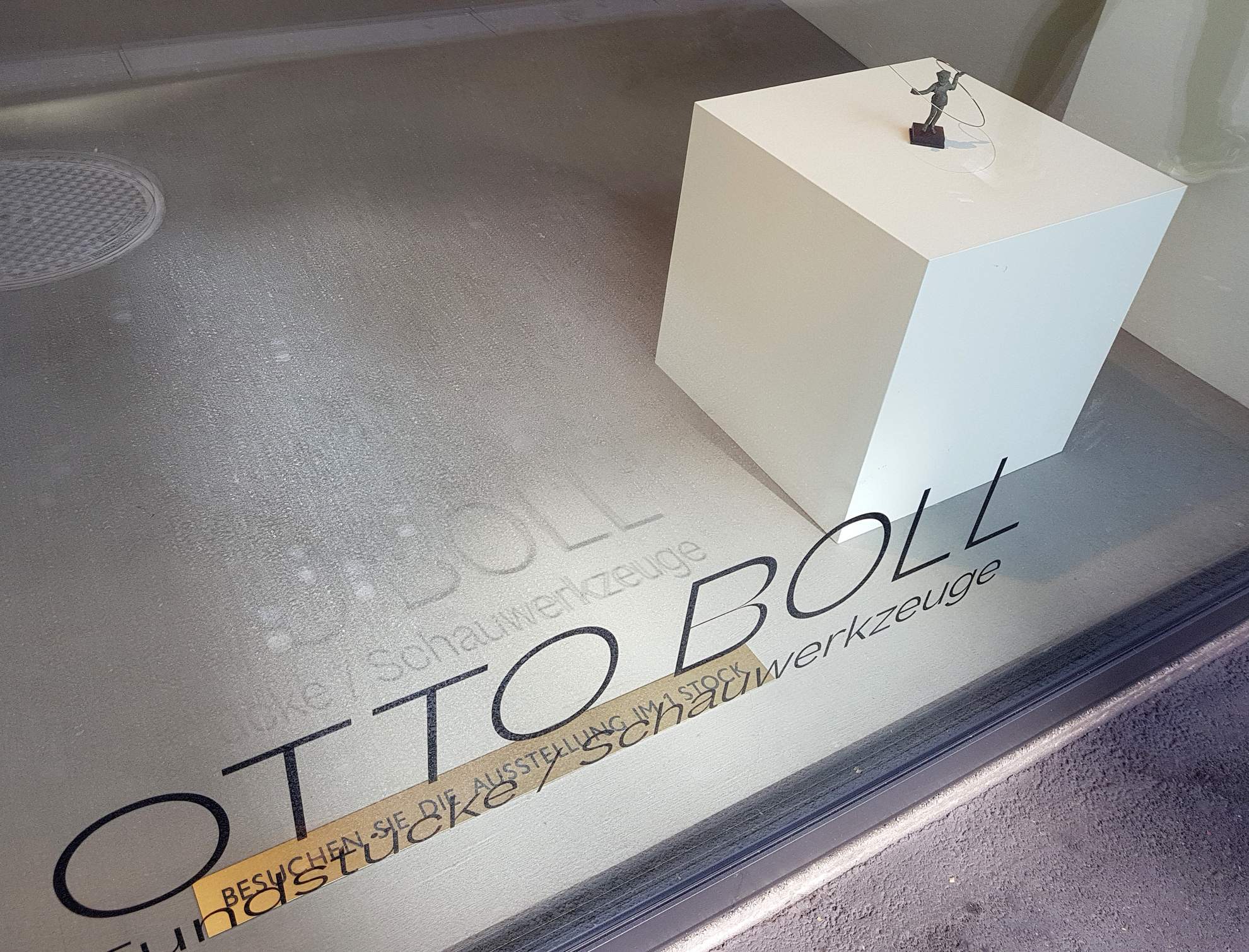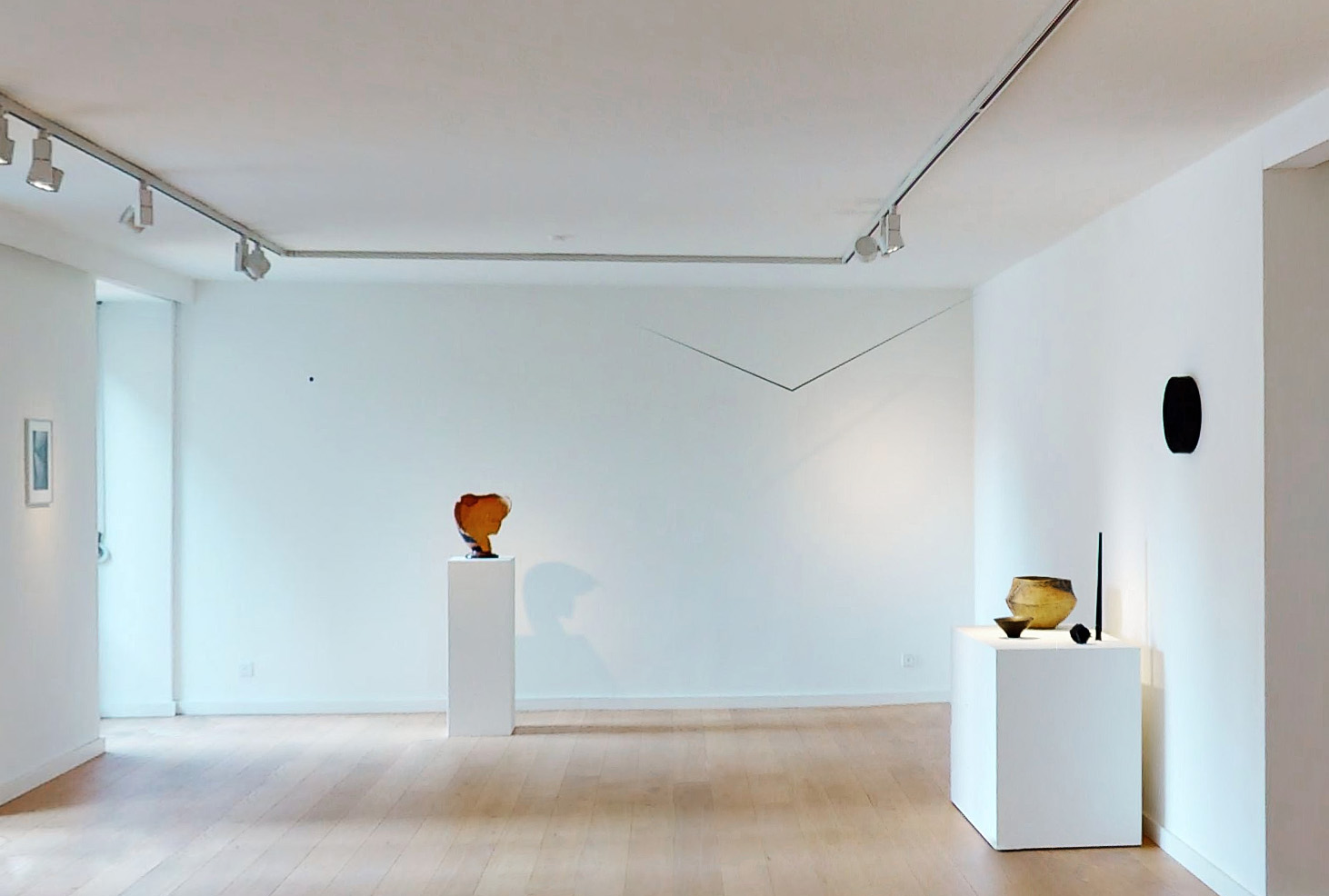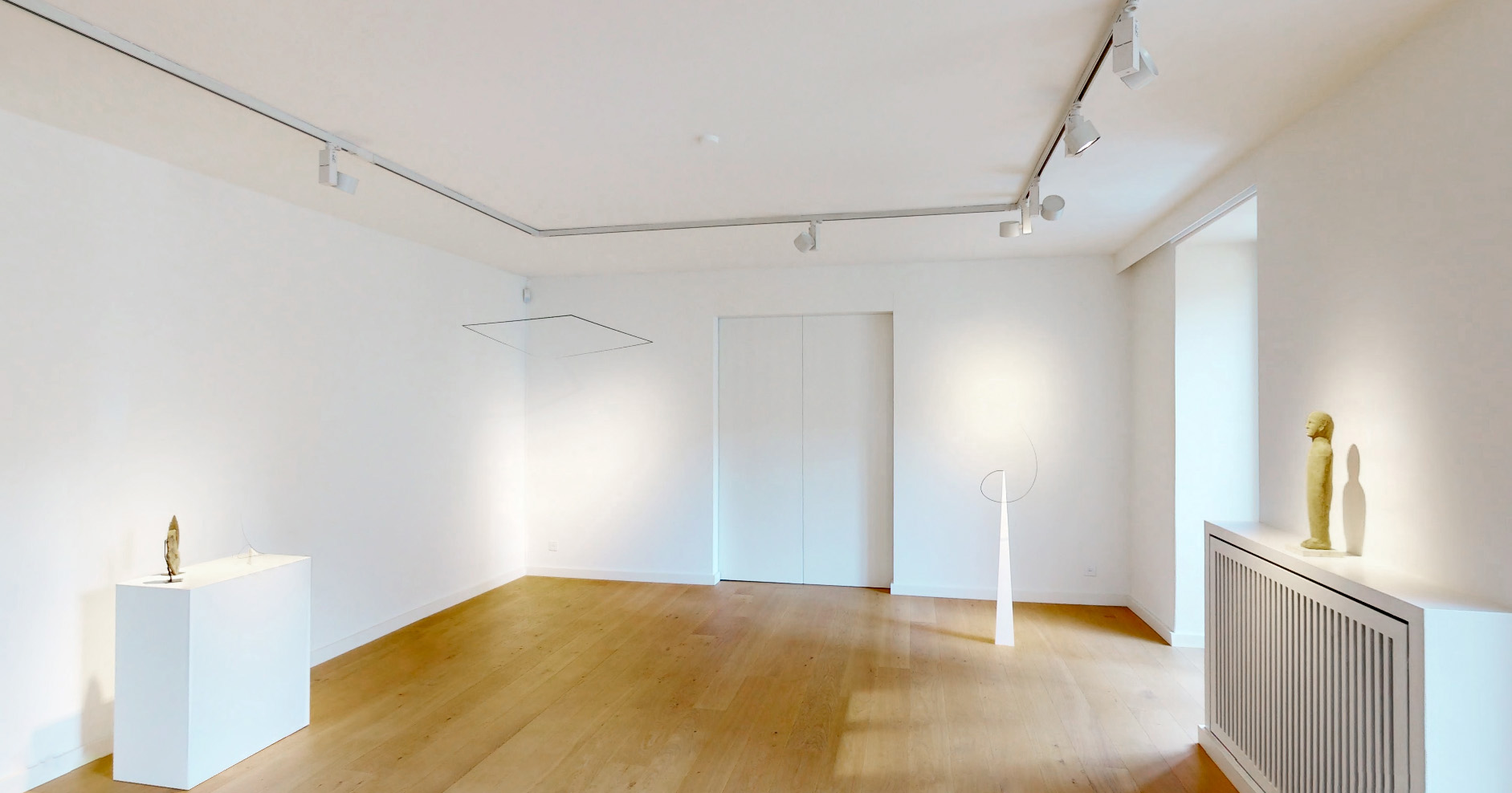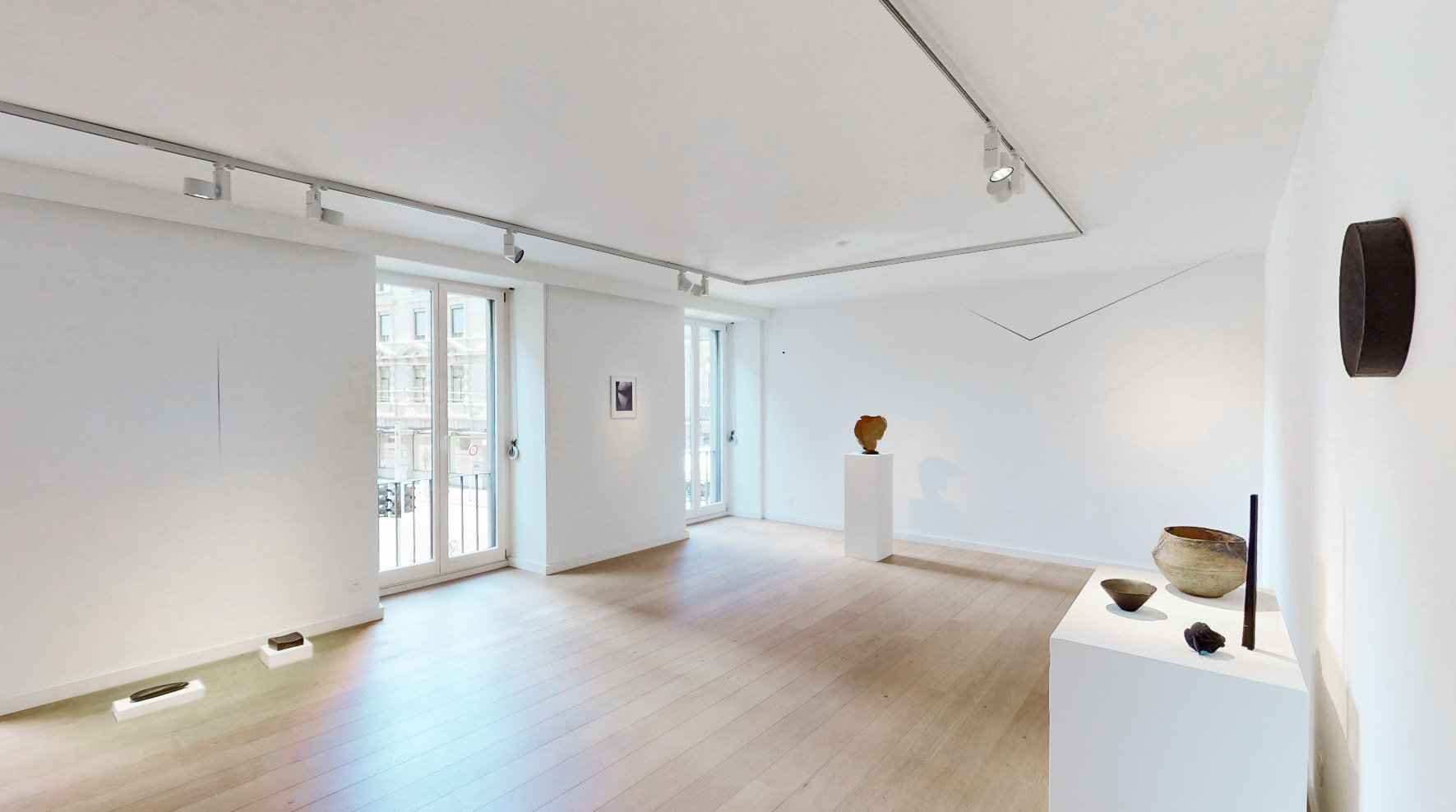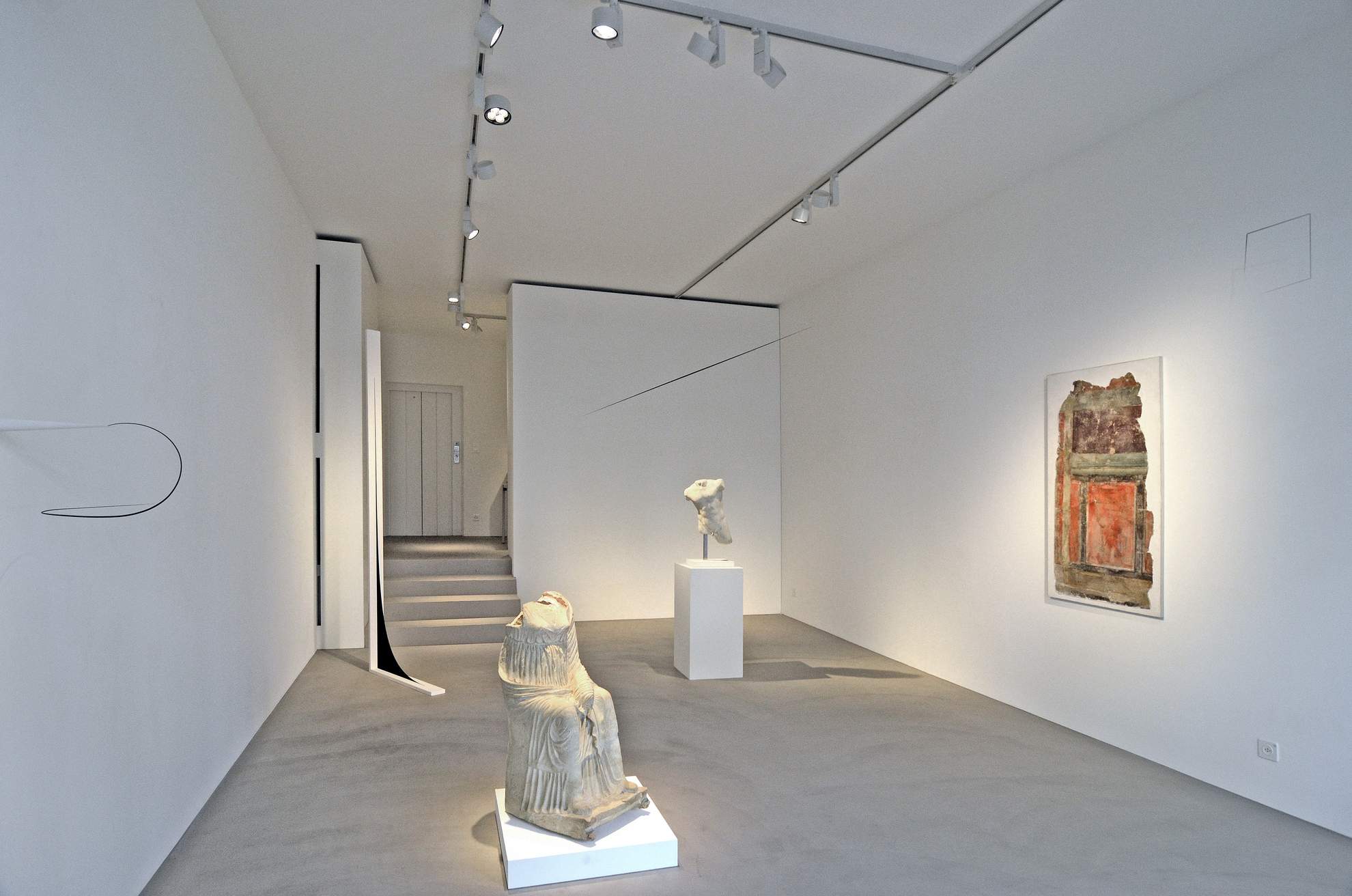
Otto Boll
Found objects / Viewing tools
-
On two floors of its premises on Zurich's Paradeplatz, the Galerie Dierking is showing sculptures and models by the German artist Otto Boll. The selection of works is presented in conjunction with antique artworks selected by the sculptor from the holdings of the art dealer Jean David Cahn.
I go by the assumption that the things
I create will become supports, specifically
also comprising the movements inherent in explorative,
forward-looking thinking.
I want to learn to better comprehend the movements,
conceptual space and imagination itself...
Otto Boll
Reflections on Otto Boll's dialogue
A male torso, perhaps of a warrior or an archer; hovering above him, a delicate line like an incision in the wall? In space? In time? Lying on a single point in the left hand of a little statuette of an actor from the 4th century BC, a further line sweeps into the space in a wide curve. The fragment of a Roman mural is answered by a square, not quite closed, formed by four very fine lines, as though marking a further pictorial level, an imaginary pictorial space.
With his extremely minimalist works, sculptor Otto Boll, a twinkle in his eye, seeks a dialogue with the testimonies of past ages and cultures selected for this exhibition. "The whole thing is supposed to be a conversation" based more on improvisation than on a specifically elaborated script. The focus is, he says, on "what the objects want from one another, what they have to do with one another".
As in his graphic sculptures, in this playful juxtaposition Otto Boll's concern is once again to promote conscious observation and physical perception as essential for understanding. Not until the viewer moves around a work to gain changing perspectives can he recognise this, since "actual presence, being close to the works, is a prerequisite for immediate experience" – whether of the hovering lines traversing, transecting, defining the space, or of the figures, bowls, axe-blades of past cultures.
In these encounters, our wish as viewers to comprehend and put into words what we have seen and experienced is frequently thwarted. Of course, we have at our disposal a vocabulary of terms such as basic form, comparable basic structures, or analogue formal principles of these works, apparently so diverse and belonging to periods and contexts so far apart. This vocabulary can serve as an instrument for placing on a rational and thus objectively comprehensible basis what we have seen and evidently experienced. However, Boll's aim is something different, something he situates in a sphere that largely eludes rationality, without thus being arbitrary or less compelling. "I go by the assumption that the things I create will become supports, specifically also comprising the movements inherent in explorative, forward-looking thinking. I want to learn to better comprehend the movements, conceptual space and imagination itself..." Here, this happens in both conceptual and formal "playing with" testimonies of past cultures, formulated as wrestling with ultimately comparable questions of conception and creativity. What, then, accounts for the continued fascination with these artistic testimonies, with these "solutions" to the form of vessels and clasps, in the context of functionality, found centuries and millennia ago? Boll says that the production of a sculpture, of a vessel, has to do with physical sensation, with being the creator of this object, in the design of which the self is mirrored, and which at the same time reflects the self in its creative drive and perception. With his minimalist works, he is close to the source of all artistic creativity: the line. Tony Cragg describes Boll's work as a fanciful incision through reality... perhaps reminiscent of the history of mankind, from its miniscule beginnings. If at some time it comes to an end, he says, it is we ourselves who are responsible.
In this exhibition of works by sculptor Otto Boll, we will be witnesses to a dialogue as an associative, intuitive incision, so to speak, through reality, through space and time. We will suddenly see these works in the context of a network of artistic, elementary forms of expression woven throughout all ages and cultures, a network in which it is quite simply a question of our being – then as now.
Susanne Wedewer-Pampus
September 2020

Otto Boll
Found objects / Viewing tools
-
I go by the assumption that the things
I create will become supports, specifically
also comprising the movements inherent in explorative,
forward-looking thinking.
I want to learn to better comprehend the movements,
conceptual space and imagination itself...
Otto Boll
On two floors of its premises on Zurich's Paradeplatz, the Galerie Dierking is showing sculptures and models by the German artist Otto Boll. The selection of works is presented in conjunction with antique artworks selected by the sculptor from the holdings of the art dealer Jean David Cahn.
Reflections on Otto Boll's dialogue
A male torso, perhaps of a warrior or an archer; hovering above him, a delicate line like an incision in the wall? In space? In time? Lying on a single point in the left hand of a little statuette of an actor from the 4th century BC, a further line sweeps into the space in a wide curve. The fragment of a Roman mural is answered by a square, not quite closed, formed by four very fine lines, as though marking a further pictorial level, an imaginary pictorial space.
With his extremely minimalist works, sculptor Otto Boll, a twinkle in his eye, seeks a dialogue with the testimonies of past ages and cultures selected for this exhibition. "The whole thing is supposed to be a conversation" based more on improvisation than on a specifically elaborated script. The focus is, he says, on "what the objects want from one another, what they have to do with one another".
As in his graphic sculptures, in this playful juxtaposition Otto Boll's concern is once again to promote conscious observation and physical perception as essential for understanding. Not until the viewer moves around a work to gain changing perspectives can he recognise this, since "actual presence, being close to the works, is a prerequisite for immediate experience" – whether of the hovering lines traversing, transecting, defining the space, or of the figures, bowls, axe-blades of past cultures.
In these encounters, our wish as viewers to comprehend and put into words what we have seen and experienced is frequently thwarted. Of course, we have at our disposal a vocabulary of terms such as basic form, comparable basic structures, or analogue formal principles of these works, apparently so diverse and belonging to periods and contexts so far apart. This vocabulary can serve as an instrument for placing on a rational and thus objectively comprehensible basis what we have seen and evidently experienced. However, Boll's aim is something different, something he situates in a sphere that largely eludes rationality, without thus being arbitrary or less compelling. "I go by the assumption that the things I create will become supports, specifically also comprising the movements inherent in explorative, forward-looking thinking. I want to learn to better comprehend the movements, conceptual space and imagination itself..." Here, this happens in both conceptual and formal "playing with" testimonies of past cultures, formulated as wrestling with ultimately comparable questions of conception and creativity. What, then, accounts for the continued fascination with these artistic testimonies, with these "solutions" to the form of vessels and clasps, in the context of functionality, found centuries and millennia ago? Boll says that the production of a sculpture, of a vessel, has to do with physical sensation, with being the creator of this object, in the design of which the self is mirrored, and which at the same time reflects the self in its creative drive and perception. With his minimalist works, he is close to the source of all artistic creativity: the line. Tony Cragg describes Boll's work as a fanciful incision through reality... perhaps reminiscent of the history of mankind, from its miniscule beginnings. If at some time it comes to an end, he says, it is we ourselves who are responsible.
In this exhibition of works by sculptor Otto Boll, we will be witnesses to a dialogue as an associative, intuitive incision, so to speak, through reality, through space and time. We will suddenly see these works in the context of a network of artistic, elementary forms of expression woven throughout all ages and cultures, a network in which it is quite simply a question of our being – then as now.
Susanne Wedewer-Pampus
September 2020
IMPRINT
© DIERKING 2025
